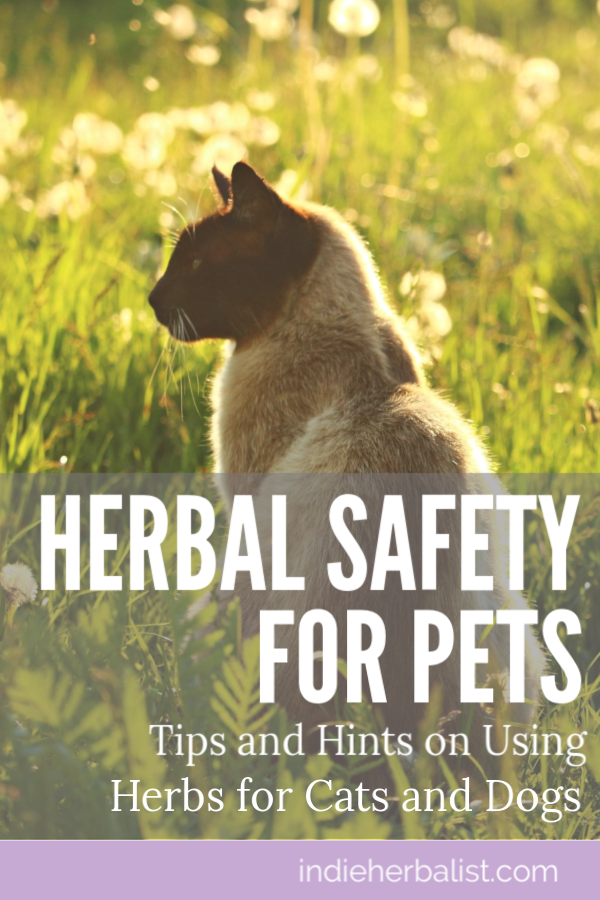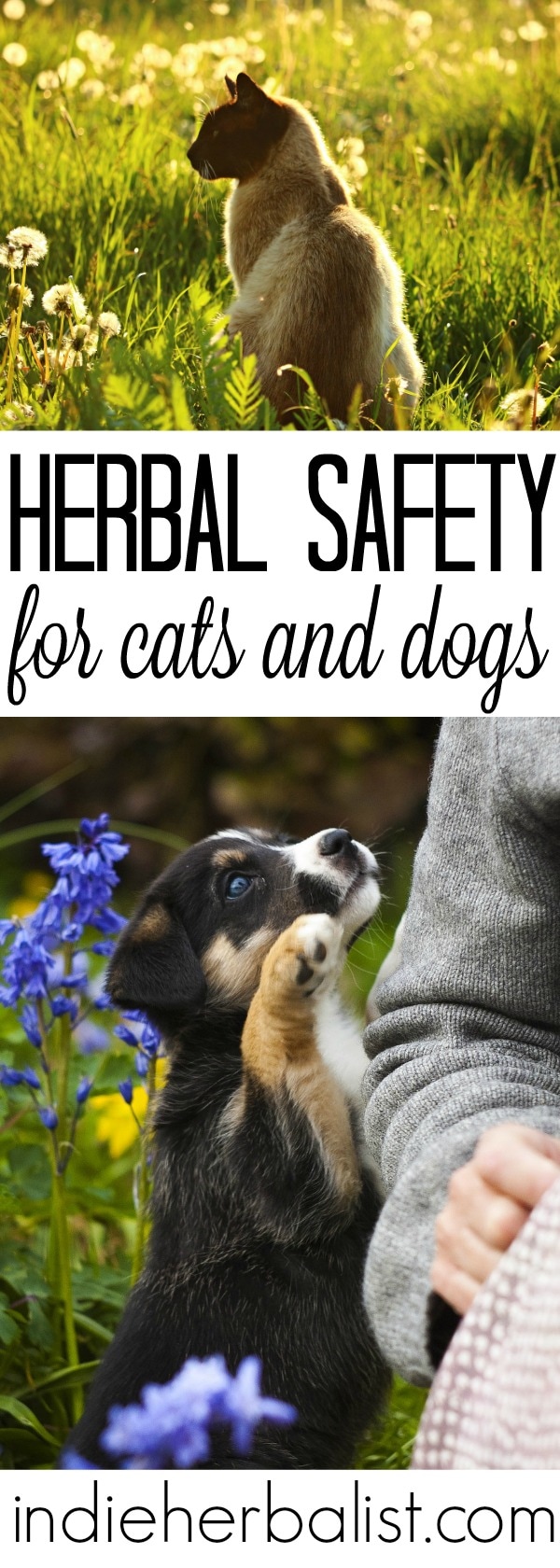Links contained in this post and elsewhere on my website may include affiliate links. When you make a purchase through these links, I earn a commission at no additional cost to you. I only link to products and services that I love - and that I think you will love, too!
My family just isn’t complete without pets. At the moment, that means multiple rescue kitties and our dog, Chaucer. Thankfully, they stay pretty healthy. However, being able to give them herbal support helps us all feel better when they are a little under the weather! For today’s post, let’s talk about herbal safety for cats and dogs.
Herbal Safety for Cats and Dogs
My family has always had a soft spot for pets. When I was a kid, we had a small menagerie of cats, dogs, guinea pigs, and gerbils, and even a horse. My grandfather was a veterinarian, and his practical, un-fussy approach to pet health has always framed how we’ve taken care of our furry family members.
My approach with herbs for pets is actually fairly minimalist. For cats and dogs, I usually focus on a single herb at a time so that I can see how they respond. Cats, especially, are very subtle when displaying how they feel, so I always keep a very close eye on them when I have added an herb to their diet.
If my pets just seem to be a little under the weather, instead of automatically giving herbs, I’m more likely to provide them with broth and/or organic baby food as a treat to make sure they are staying hydrated and provide extra nutrition, and make sure they have some extra “nesting” spots around the house where they can rest.
Even though herbs are natural, there are a few important rules to follow if you want to share them with your pet. These rules are:
- make sure the herb isn’t toxic to your pet
- use the right amount
- give herbs in a safe, non-stressful way
Make Sure the Herb is Safe to Give Your Pet
Plants that are fine for humans may not be ok for pets. Even fruits and vegetables that we eat as food can be dangerous for them. Good examples are grapes and garlic. Grapes can lead to sudden acute kidney failure in dogs. Garlic can lead to a type of fatal anemia if given in large quantities.
Double check with your vet and some good herbal reference books specifically for pet health before you give your cat or dog a new herb. You can find links to my favs at the end of this article. Generally speaking, I’ve found that if an herb is safe for children, it’s probably safe for dogs and cats. But it’s still a good idea to double check.
One of my favorite references for herbs and pets is a textbook written by a verterinarian, Herbal Veterinary Medicine by Susan G Wynn and Barbara J. Fougere. You can find my full review of it here.
Use the Right Amount of Herbs for Pets
It’s important to remember that most pets are much smaller than we are! A full serving of an herb for a human is far too much for a cat or a small dog (although if you have a large breed dog it may be close to the same!). A typical serving size for an herbal supplement is based on an “average” adult human weight of 125-150lbs.
To find a safe serving size for your pet, look it up in an herbal reference like the veterinary textbook above, or divide the human dose according to your pet’s weight. For example, for a 60lb dog like Chaucer, I use 1/2 the “human” serving size.
Safely Offer Herbs to Pets
In my experience, powdered herbs are a simple, safe way to give herbs to pets. Mixing powdered herbs into baby food or a little canned fish has always worked well for my cats. The key is to find a way for them to eat the herbs with as little hassle as possible. If they are feeling unwell, the last thing you want is to stress them out more by forcing them to take herbs.
Peanut butter has always seemed to be the best accepted bribe for my dogs, but make sure that your peanut butter does NOT have xylitol as a sweetener. Xylitol (even though it is natural) causes dangerously low blood sugar in dogs and cats and can be fatal.
Herbal infusions and decoctions can be used as well, and made tastier with a little bone broth or chicken soup.
If an animal is very sick and not eating or drinking, you can use an eye dropper or small syringe (no needle, obvs!) to give herbal teas. Blending herbal teas with chicken broth can make them more enticing for cats and dogs, so you can try offering herb teas that way before resorting to syringe feeding.
Your vet or a vet tech can show you the proper way to give liquids with a dropper or syringe – it can be a bit tricky if you haven’t ever done it before. There’s a danger of getting fluid into your pet’s lungs if not done correctly.
Glycerin-based extracts are also safe to give pets, and veterinarians will sometimes use alcohol extracts as well. I use extracts for Chaucer sometimes because it’s very convenient.
Pet First Aid Round Up





